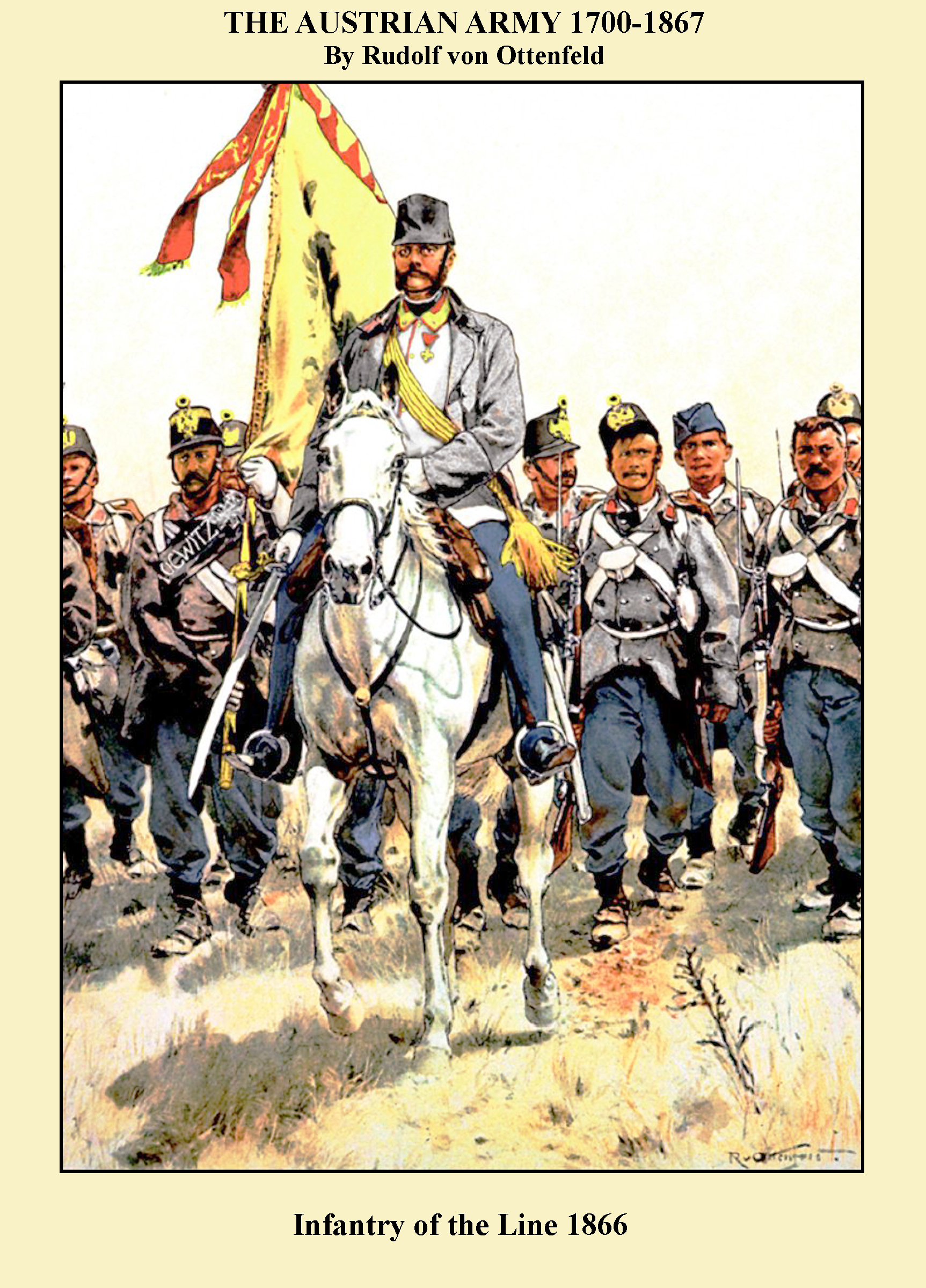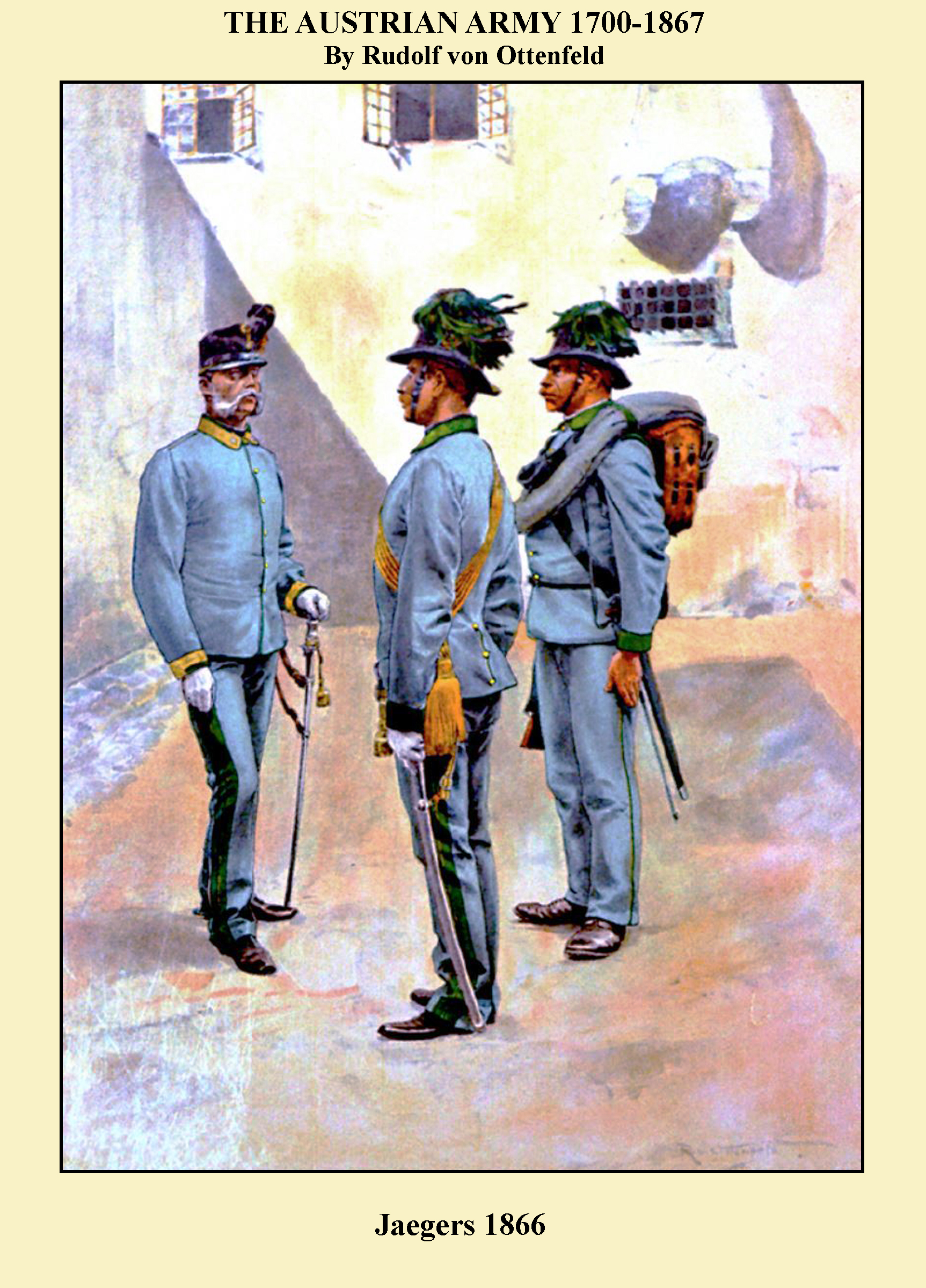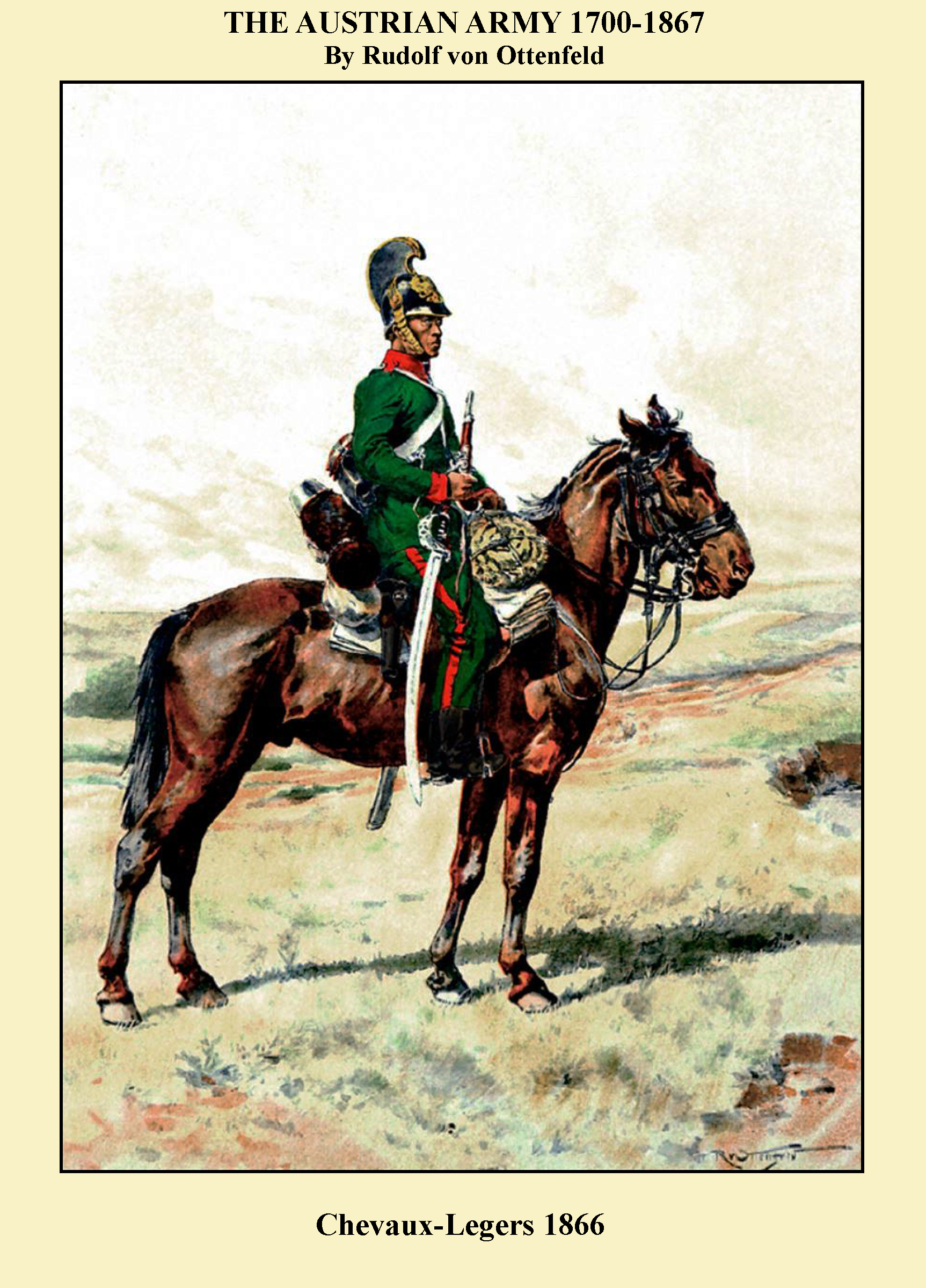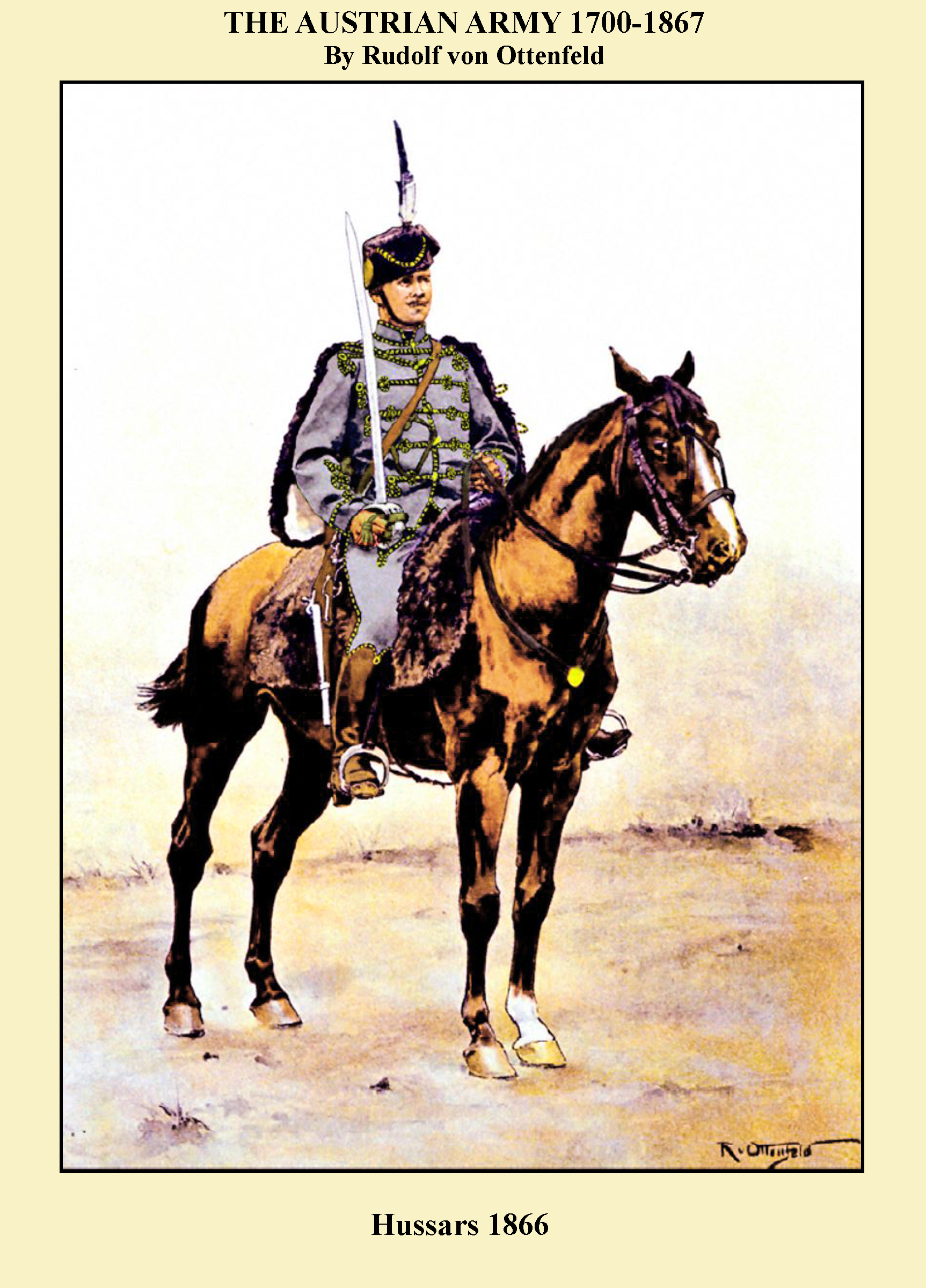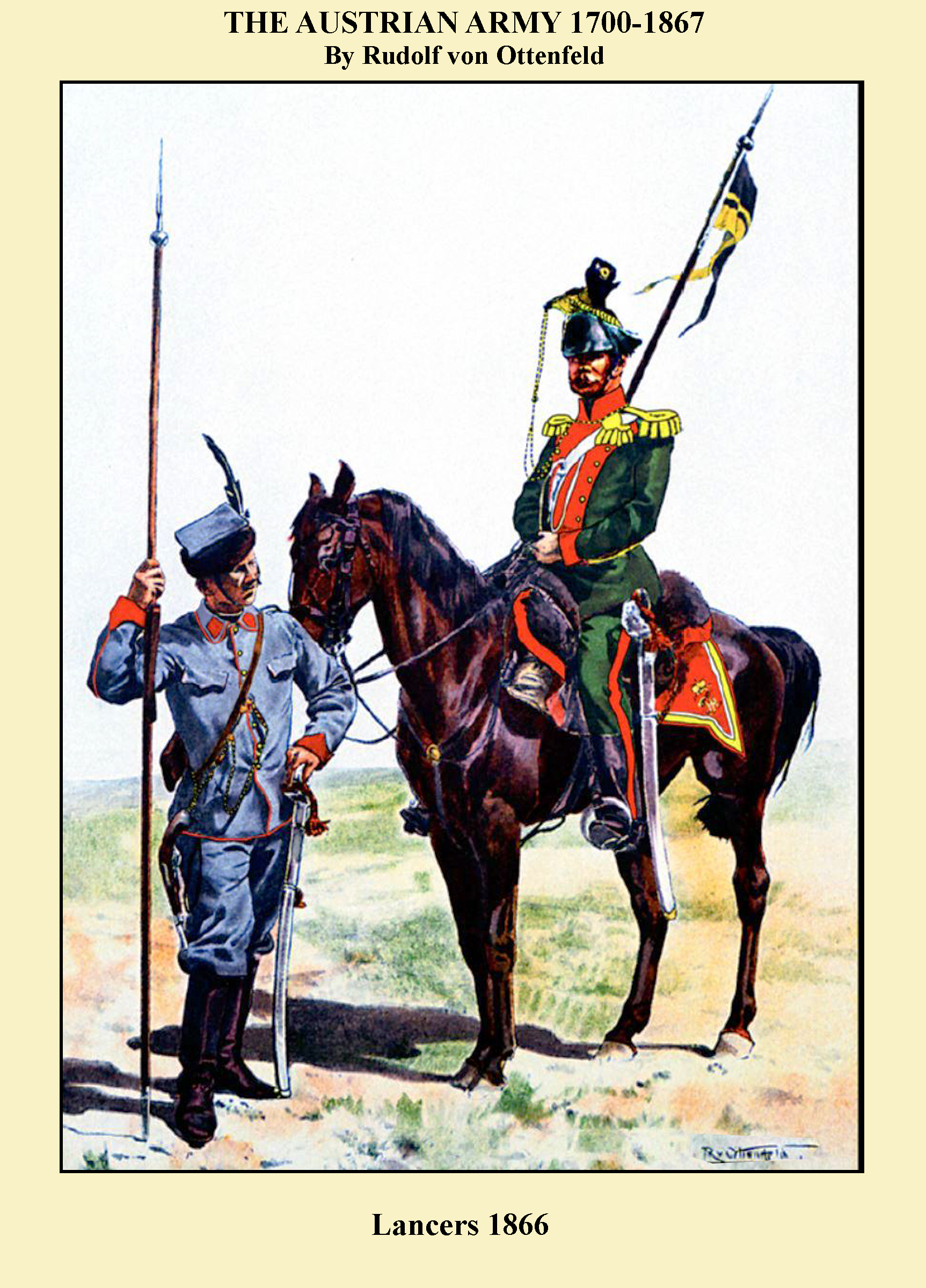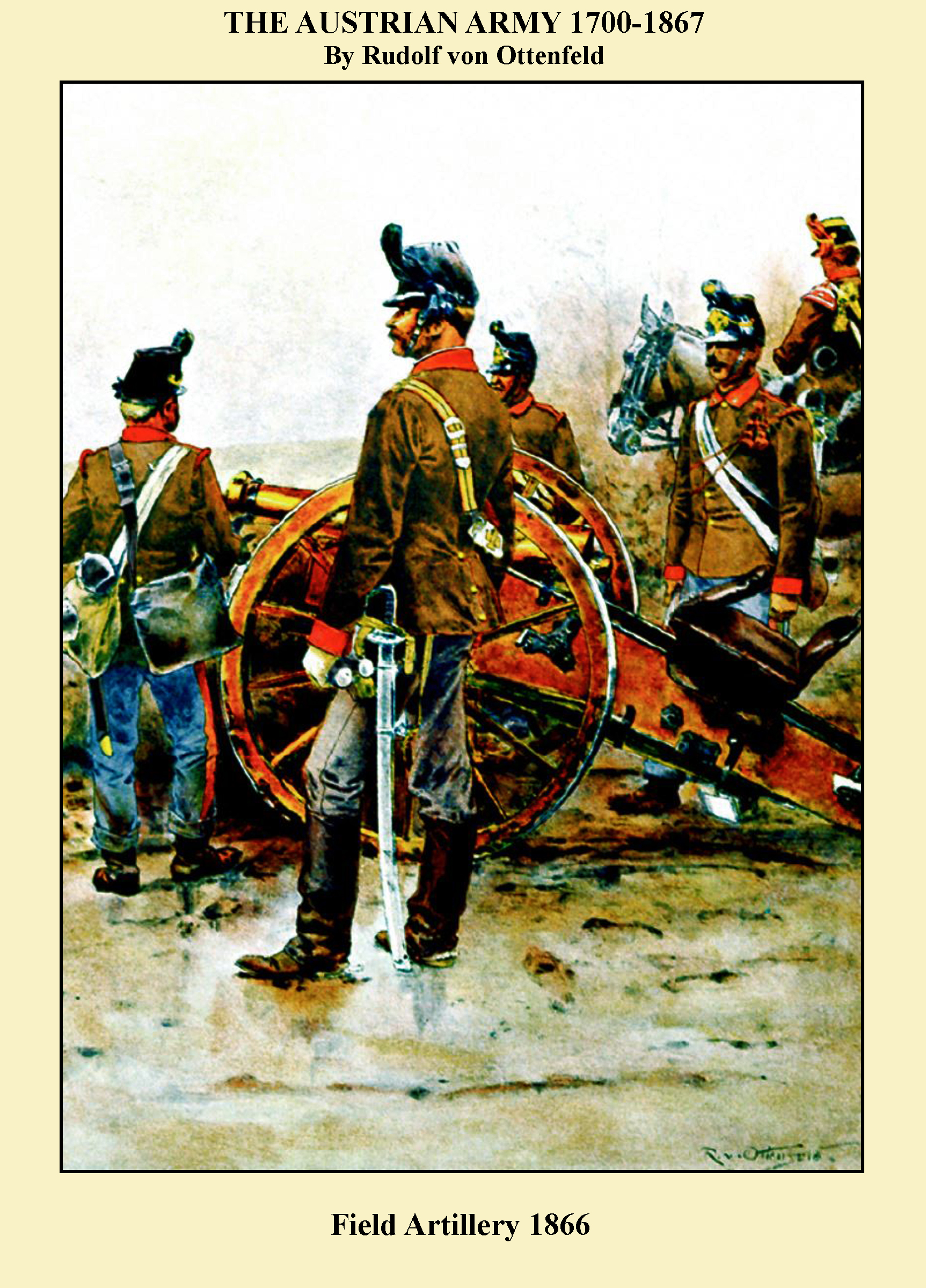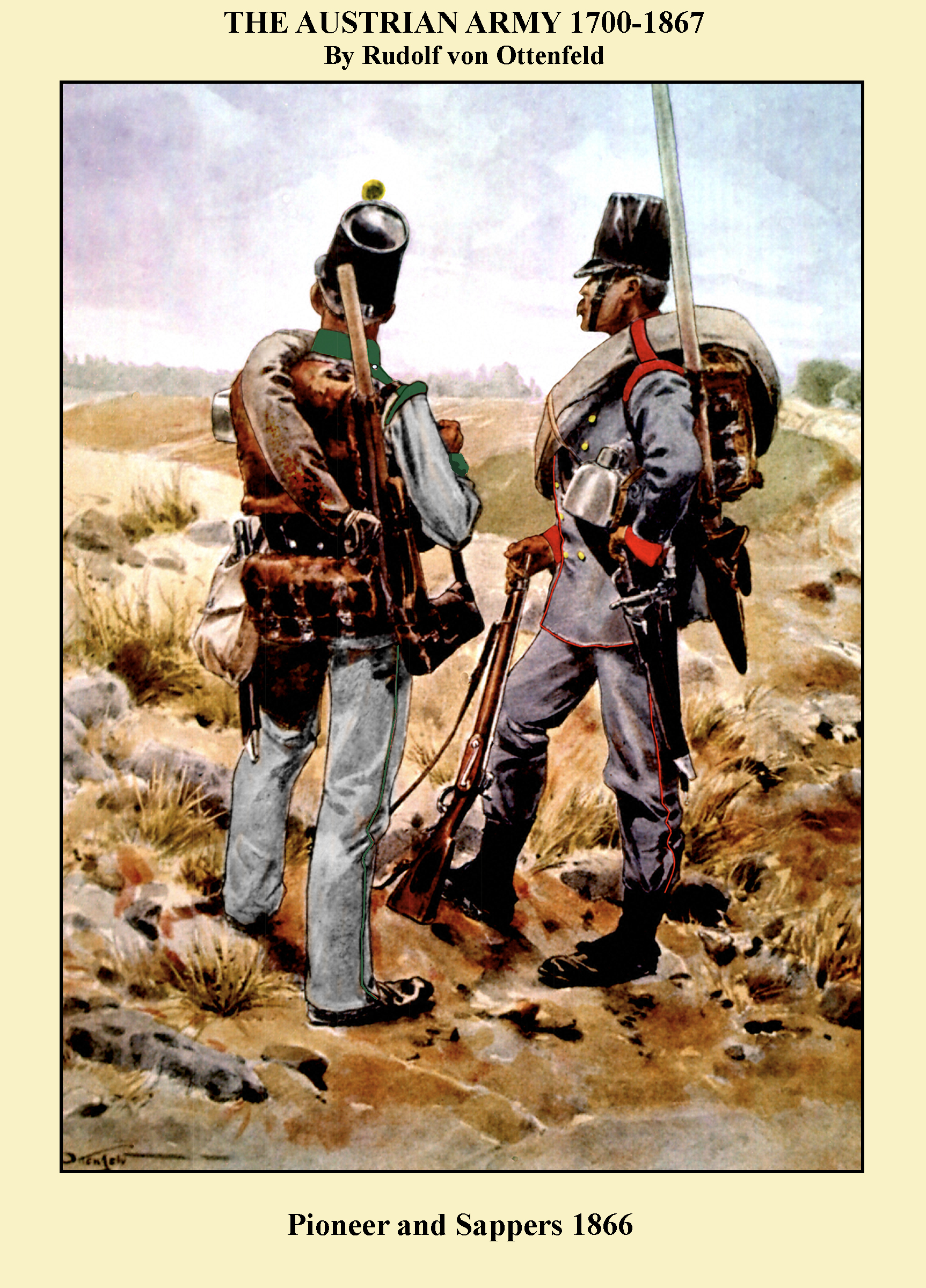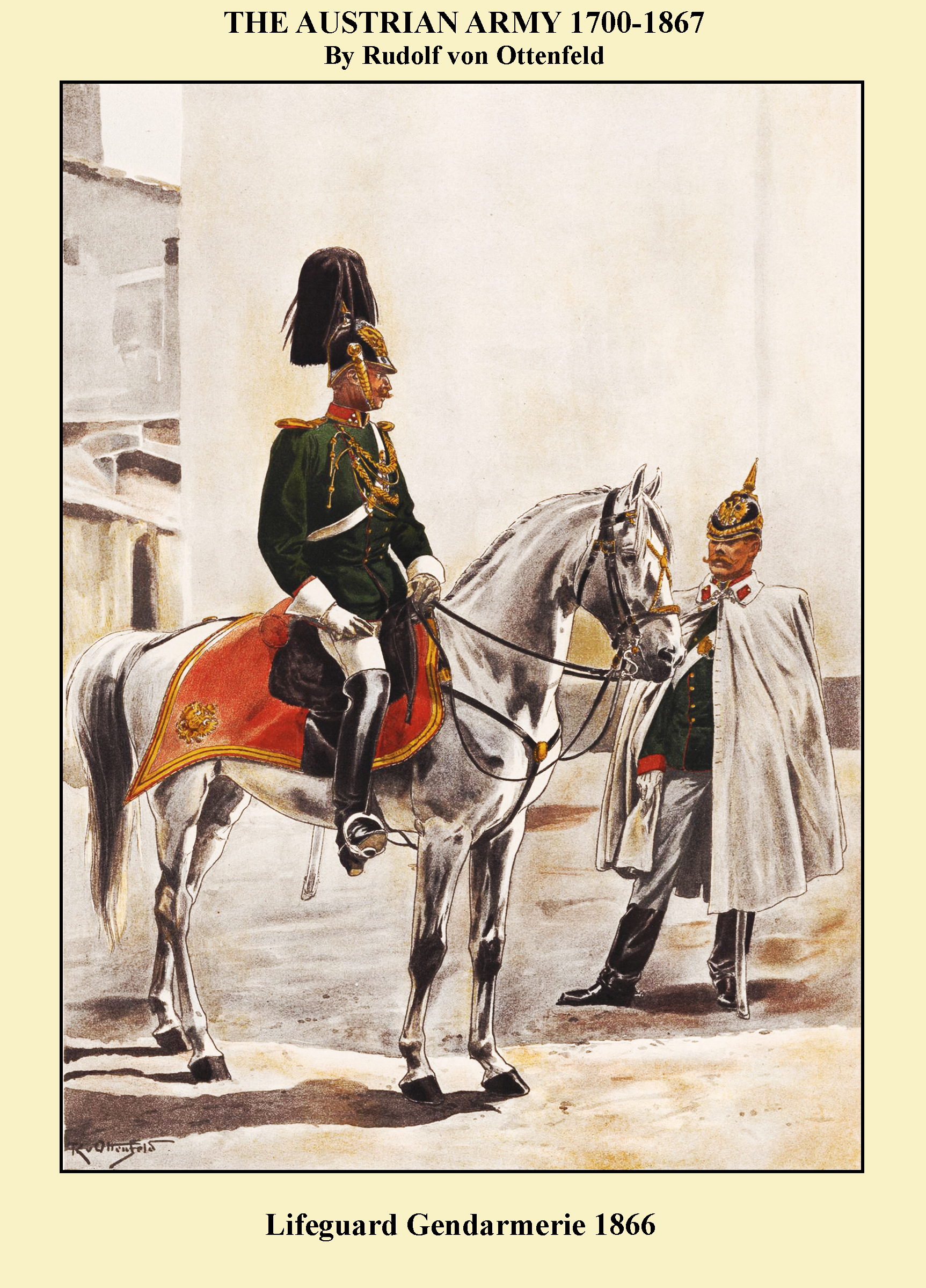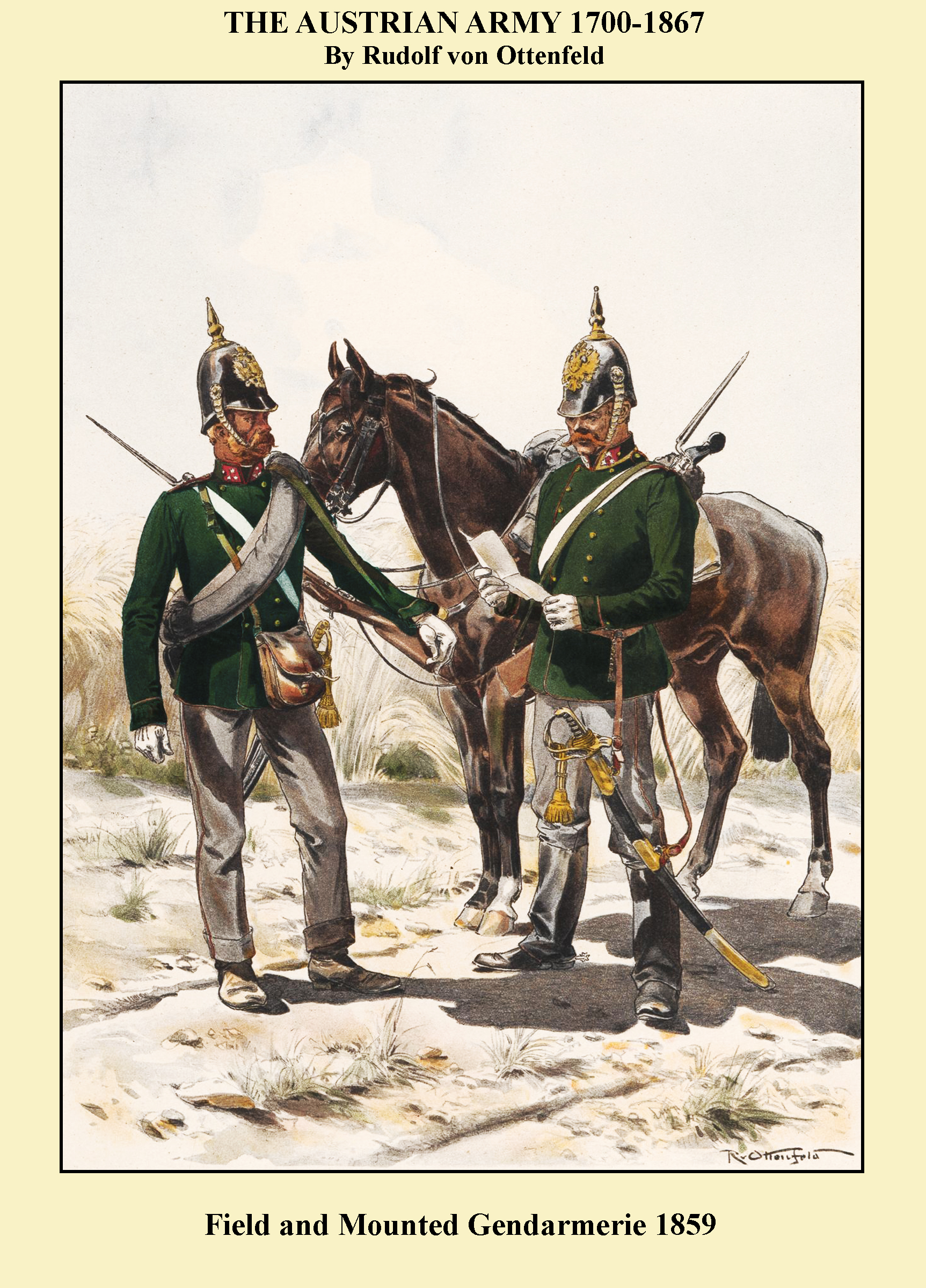THE WORLD OF MILITARY UNIFORMS
1660-1914
THE AUSTRIAN ARMY 1700-1867
By Rudolf Otto von Ottenfeld
Page 6
Infantry 1866
These are the infantrymen of the Seven Weeks War as they advance to certain death at the hands of their Prussian enemy armed with the needle gun. They wear their gray campaign overcoats in place of the white tunics. The mounted officer has wears his overcoat over the tunic, which was the 1862 model with fold down collar. His sash is worn over the shoulder. Their baggy blue trousers indicate that this is a German infantry regiment. The standard bearer at left has the colour unfurled. He carries the black oil cloth flag cover across his chest. Notice the infantryman at right who wears his fatigue cap in place of the shako. Although not many soldiers wore the white tunic on the battlefield, they were certainly folded up in their valises. They weren’t worn much afterwards. By 1868, the Austrian Infantry had adopted the blue tunic and after nearly two centuries of use, the “White Coats” would never be seen on the battlefield again.
PART IV
THE SEVEN WEEKS WAR
1866
The Austro-Prussian war was engineered by Prussia to end Hapsburg hegemony of central and eastern Europe and pave the way for the unification of Germany. The brilliant campaign of Helmuth von Moltke defeated the Austrian armies under the command of the hapless Ludwig von Benedek. The culmination of the war came on July 3rd before the Bohemian fortress of Koniggratz on the River Elbe. The breech loading "needle gun" of the Prussian infantry overwhelmed the Austrians and their "open" rushing tactics thwarted the cumbersome advances of the Austrian columns.
The defeat removed Austria from the centre of European affairs and forced the Hapsburgs, in order to head off a secession of Hungary, created the dual Monarchy. The new Austro-Hungarian Army was entirely different in character than the former army, but by the time of the Great War was not different enough to be victorious in the war that it essentially started.
Jägers 1866
The Jägers are now wearing the uniform which, to all intents and purposes, was the one worn until 1914. This plate demonstrates three orders of dress worn by different ranks; on the left is an officer in pike grey undress tunic. The short peaked cap was the Austrian officer and senior NCO’s variant of the fatigue cap. In the center is an Officer in parade dress with Corsican hat. At right is a Jäger in marching order. He wears the full kit. At Koniggratz, they wore the greatcoat like their infantry counterparts.
Dragoons 1866
In 1861 All white coated Dragoon Regiments were converted to Cuirassiers and the two Chevauleger Regiments were styled Dragoons. This soldier is dressed as he would have been during the battle of Koniggratz and wears the old green uniform. His campaign saddle and equipment are covered with a sheepskin and he does not have a colored saddle cloth that would have been used for dress occasions. His black leather helmet has a simple black crest trimmed in brass. He carries the simple smoothbore pistol. In 1867 all Dragoons were issued with light blue tunics and madder-red trousers. The helmet remained the same
Hussars 1866
This is the uniform that was ordered for wear in 1865. Most regiments were wearing the fur cap along with the 1850 attila, pelisse and pantaloons during the 1866 campaign. In Italy, they wore the kittel with the pelisse. In 1868 all regiments were ordered to wear madder-red pantaloons (with the rest of the cavalry) and a low crowned shako was adopted. This uniform was worn till the Great War. The gray uniform is ornamented with yellow and black cords. Black and yellow cords are also worn on the short fur cap. Notice the small smoothbore carbine slung on the left.
Lancers 1866
By 1859, the Uhlan (Lancer) uniform differed little from the one worn in Napoleonic times. The double breasted tunic (or Ulanka) was introduced in 1850 but little else was changed. The influence of the volunteer troops soon began to make itself felt and in 1862 the 13th Regiment was ordered to change its uniform to a light blue lapel-less tunic with pointed flap pockets. The trousers were also light blue but changed to madder-red in 1865. In 1865 all Uhlan regiments were ordered to change to this type of uniform, but the old green uniform didn’t disappear until after the Seven Weeks War.
Field Artillery 1866
No branch of the Austrian Army were more skilled or devoted than the Artillery. Without doubt, their rearguard action after the rest of the army were retreating over the Elbe, saved them from annihilation. Their uniforms had only changed to the same extent as the infantry but was essentially as 1859. This was a Field or mounted battery. Notice the trumpeter in the background and the “saddle” or seat attached to the gun carriage. This picture probably depicts “The battery of the dead” who fought to the last man on the Chlum Heights on July 3rd 1866.
Pioneers & Engineers 1866
These two troops differ only in the color of their uniforms. The pioneer at left wears a pike gray uniform (like the Jäger) while that of the engineer is light blue. The engineers were used more in combat and were used during sieges and river crossings. The pioneers worked to keep roads open for the movement of troops.
Lifeguard Gendarmerie 1866
This noble unit was created in 1849 to provide escorts to members of the Imperial family and as special couriers for the Emperor and his staff. Its members were ex-officers of the armed forces and ranks consisted of retired and reliably loyal NCOs. These uniforms were worn virtually unchanged until 1918.
Field Gendarmerie 1866
There had been a Land Gendarmerie (essentially a police force) in Lombardy and Venetia since 1815. Following the revolutions of 1848 it was decided to raise such units for all regions of the Austrian Empire. In 1850 sixteen regiments were formed providing one for each district. Each regiment consisted of foot and mounted elements. In 1860 the districts were consolidated down to nine with the Gendarmerie regiments combined. The uniform remained much the same during the period. At first the Prussian style spiked helmet was adopted, but in 1860 it was replaced with the (probably more comfortable) Corsican hat.
NEXT:
THE AUSTRIAN NAVY


